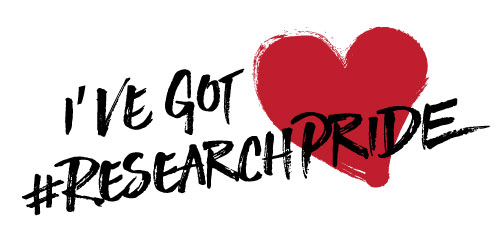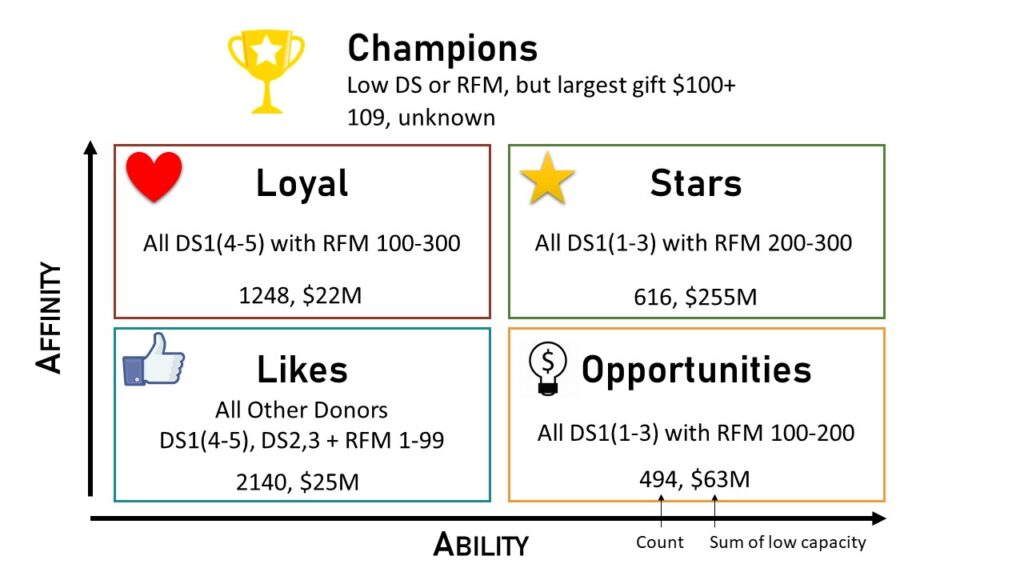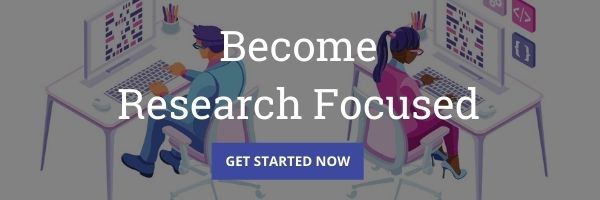What would happen if researchers adopted the technique of method acting for one week out of every year? What if the researcher “became” a major gift fundraiser? Could this be the kind of training that could differentiate between superstar researchers and all the rest?
Are you familiar with method acting? It’s where the actor stays in the role of the character, even off camera. Jack Nicholson — he starred as Jack Torrance in the Shining, Col. Jessup in A Few Good Men, and too many more to list — was reported to have modestly said, “There’s probably no one who understands method acting better academically than I do, or actually uses it more in his work.”
And I have heard of organizations where the researcher tags along for some donor visits or makes thank you calls to donors. As part of the development department, it’s not unheard of for a researcher to help staff major donor events. I have. All of these interactions shift the researcher out of his or her research mindset and into a donor-facing mindset.
Because whatever research you’re doing – profiles, data mining, prospect lists, verifying a screening – could benefit from one last review by you, but in the mindset or role of major gift officer. When I say “one last review” I mean that there needs to be distance of some kind between performing the work and reviewing the work.
Just as writers will put down their work for a few days or a few weeks, picking it up again with “fresh eyes,” so researchers can put down their work and pick it up again with “major gift officer eyes.”
Reviewing Research through “Major Gift Officer Eyes”
Anyone who routinely reviews donor prospects with talented major gift officers can’t help but to start thinking like one. Imagine that you both have the profiles up on your computers and the major gift officer starts commenting and asking questions in each of the five building blocks of the profile, like this:
- Institutional Information: Is this the same couple that met while on one of our sponsored donor trips? (Yes, it was, and by golly that level of high affinity changes everything about approaching them for a campaign gift!)
- Biographical Information: I clicked through to her Twitter account and did you see that in her profile line she describes herself as a “disability advocate, wife, and mother?” I wonder if they have a disabled child! (Obviously, you didn’t read it because you put “none found” under children and didn’t find any connection to your cause beyond her first gift to your organization.)
- Community Involvement: They gave a million dollars to Sunshine Charity? Really? I wonder what that was about. They’ve only ever given us $1,000 and everything else found shows giving under $5,000. (After tracking down the annual report it turns out it was a typo from the vendor and you need to re-examine the screening capacity rating.)
- Occupation: His wife is Janita Billingswart? Do you think she’s the celebrity attorney? A name like that, surely… (But you didn’t search her name because the deep relationship has been with the spouse and you were in a hurry.)
- Wealth and Assets: Can you tell me more about the family limited partnership you mention here? Doesn’t that mean they have a lot of money? (You check it out when you’re off the call and realize it does indicate significant wealth and now you notice it was formed the same year that they sold their first company.)
You might not be able to practice method acting and live the life of your major gift officers to understand them, but you can live their work life vicariously by engaging in frequent conversations about their prospects. It takes dedicated effort, but so does method acting. And you will learn LOADS about doing research better.
Getting Good Without Shock Therapy
It was rumored that Jack Nicholson underwent shock therapy in preparation for his role in One Flew Over the Cuckoo’s Nest. I don’t recommend diving deep into every single research project or you might just go crazy!
Here’s how I described to a client, and an amazing major gift fundraiser, what he could expect from our profiles so he could know when to question us about the work and when he should run off on his own with his questions:
- Our Snap Bios are a quick look, a snapshot, and it is unlikely that we would jump out of our usual process to follow a lead or ask a deeper question about the prospects.
- Our Tactical Briefings are confirming philanthropy and wealth and while we are spending more time and digging deeper, we’re unlikely to wander off following a hunch unless there is an anomaly — unless something looks strange or we want to be sure we are accurate.
- Our Strategic Assessments are the deep dive, following all those questions, untangling ambiguity, and laboriously seeking information not directly related to the prospect, but directly related to the prospect’s philanthropic or wealth story.
Of course, the fewer hours it takes us, the lower the cost, but the less information, too. Sometimes we do get dazzled by a prospect, spend more time, and the inspiration unlocks key information. We love our work and that’s inevitable!
Anything You Do, You Could Do Better
The prospect research field is full of people who are fulfilled in their work because it demands constant learning across, well, everything! We can have confidence in knowing that we don’t know a lot, and this opens us up to learn from everyone, everywhere.
So, even though the examples I’ve given in this article relate to prospect profiles, you could do better in every aspect of your work. Maybe your major gift officer loves Excel and enjoys filtering and sorting a long list of potential prospects for an upcoming trip, but is that the best way to provide the information? Could the process be improved?
If you don’t look at your work product through “major gift officer eyes” you may never know. I’m curious. Aren’t you?











